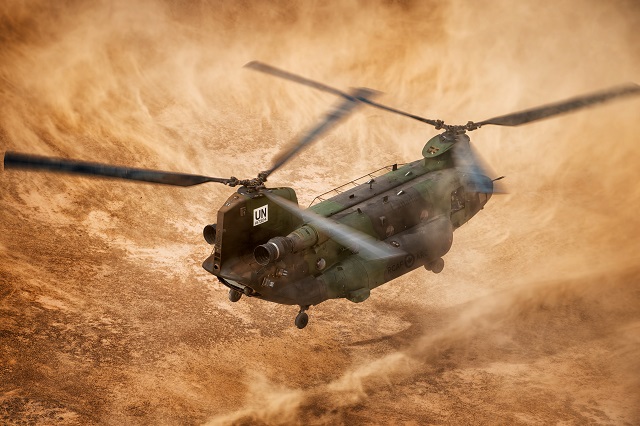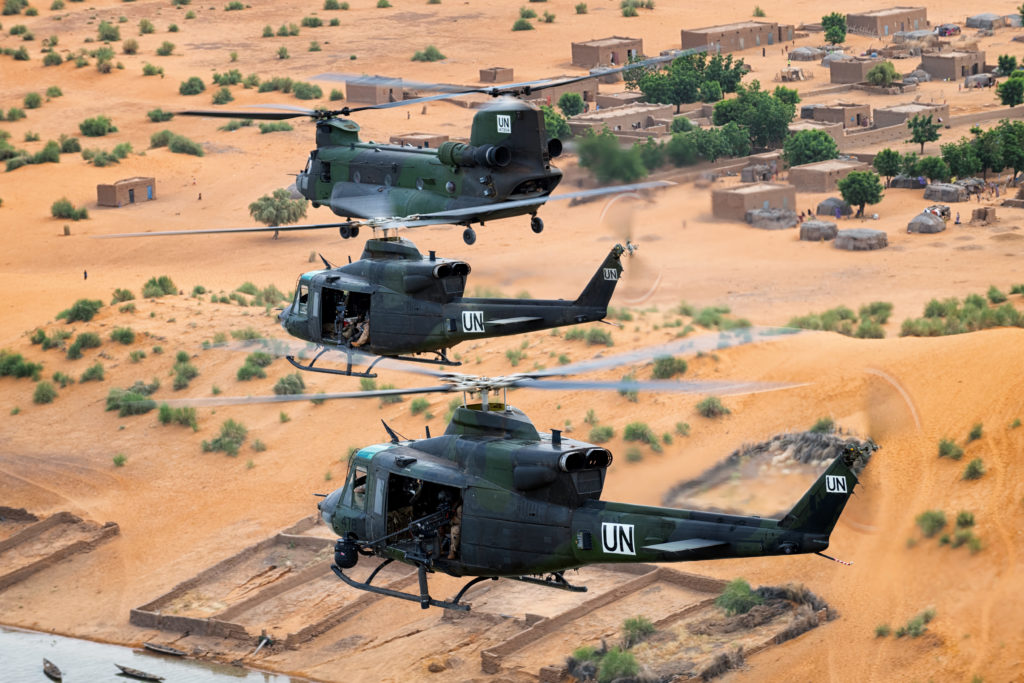Estimated reading time 8 minutes, 46 seconds.
Canadian helicopters have conducted five forward aeromedical evacuations and 26 missions in support of United Nations troops during the first six months of a 12-month mission in Mali.
Despite flying conditions that at times featured heavy rains, rapidly forming thunderstorms and dust balls, Canadian Armed Forces personnel on the first rotation of Task Force Mali helped the UN stabilization mission reach a number of remote villages that previously had seen little or no UN presence.

“The (UN) force commander definitely saw us as a key tool to enable his manoeuvre and project UN presence in places that before they would not have been able to do,” said task force commander Col Chris McKenna.
The task force of about 250 aircrew, maintenance technicians, medical personnel, force protection, logistics and headquarters staff arrived at Camp Castor, a UN base near the central city of Gao, in August 2018, and have maintained an around-the-clock aeromedical evacuation capability since.
The most significant response involved an IED (improvised explosive device) strike on a UN vehicle about 100 kilometres (km) northeast of Gao on Nov. 1 that critically injured two civilian contractors working for the UN. The medical team was able to perform “a significant number of interventions,” said McKenna, before delivering both workers to a Chinese-run hospital in the region.
The five aeromedical incidents were spread out over the six months, a frequency similar to that experienced by German aircrews who handed over to the Canadians. “They told us … to expect about one a month,” he said. “Anytime something happens, we stand up; but sometimes there are closer assets to an incident site than us.”
“We have definitely matured the capability throughout the roto,” he added. “The very existence of a high notice to move medevac capability guarantees the confidence of our partners to drive around the area of operations, knowing that if something bad happens, Canada is coming to help.”

Though the medevac responses may have been few and far between, the three CH-147F Chinook and five CH-146 Griffon helicopters transported UN troops on 26 occasions into isolated communities, inserting a platoon or company of troops near a village to spend a day conducting a “needs analysis” with local leaders and ensure delivery of medical and humanitarian aid.
McKenna said the request for “deliberate” operations, often planned with 24 to 48 hours notice, began with allies based at Camp Castor such as the Dutch and Germans, but expanded in recent months to include visits to Kidal and Timbuktu with non-traditional partners, such as Chad and Guinea, Burkina Faso and Sweden. In addition to the Chinook and two Griffon escorts, most missions have been conducted with a German Heron unmanned aerial vehicle (UAV) feeding imagery directly into the Canadian operations centre.
One of the most difficult was a 600-km trip with Timbuktu Dutch troops into the Niger River Delta, to a village called Dialloube northwest of Mopti that had never seen UN forces.
“Our role here has been really important in the sense that there is no other military aviation task force able to offer a very agile and responsive manoeuvre to (the UN),” explained McKenna, who will depart after handing over to Col Travis Morehen on Jan. 27. “As bad things have happened in the theatre, we have been quite reactive in putting troops on the ground to get that UN presence out and that UN flag in a village.
“The key takeaway for me is the need for aviation in a place like this and the importance that the UN has placed on Canada’s contribution,” he added.

Task Force Mali marks the first deployment of the Chinook on an international operation in hot and dusty conditions, and McKenna said one of the bigger surprises is how reliable it has been.
“Of the two fleets, the Chinooks have performed the best in terms of serviceability. I’ve been two for three on average,” he said, attributing that success to the depth and size of the package of spare parts and the ability of the technicians to conduct deep inspections in theatre. “They are flying every day, quite a bit. My experience is that if a helicopter flies a lot, it typically stays serviceable.”
Managing the supply chain and spare parts for the Griffon, on the other hand, has been a challenge. He said the process has “evolved quite a bit” over the rotation to ensure helicopters are always on a high readiness posture.
The task force deployed with three rather than two CH-147s and five rather than four CH-146s, a decision that has been key to meeting that short notice to move mandate, said McKenna, allowing technicians on occasion to raid the extra aircraft for spare parts.
The one major hurdle to projecting UN forces into remote regions has been refuelling. While the helicopter package has a range of about 400 to 450 km, and UN bases in Kidal and Timbuktu have fuel trucks, McKenna said fuel stops are usually about “150 miles (241 km) in any direction,” a far cry from the 40 to 50 miles (64 to 80 km) experienced in Afghanistan.
“We did two operations out of Timbuktu where we actually lived there for three days straight. And in Kidal, we’ve been able to execute ops by planning and doing it that day. But it makes for a very long day and the distances are quite enormous,” he said.
Flying conditions have also been problematic at times. The mission began at the height of the rainy season and included wide thunderstorms, usually preceded by dust storms, that appeared with little notice.
“In Canada, a thunderstorm moves at about 15 to 20 knots; in Africa, they seem to move at 60 to 70 knots, so you can very quickly have Gao disappear behind a thunderstorm when we are flying and not have a lot of gas options,” said McKenna. “We had to watch that really closely this fall.”
Though the region has dried out since mid-October, constant winds have stirred up more dust that sometimes affects visibility, although “nothing that is overly a threat to aviation,” he said.

As he prepares to hand over command of the task force next week, McKenna said the Canadian experience has proved the criticality of tactical aviation. “There’s no question that a mission of 13,000 plus soldiers in a country that’s one-and-a-half times the size of Ontario needs helicopters, especially given the IED threat.”
His advice to Morehen will be to “keep all the manoeuvres we do here quite simple to make sure it is repeatable and safe.” That means making sure Canadian Forces can “back ourselves up anytime we are doing one of these missions” while keeping a constant eye on the weather.









Skies,
City is “Gao”, and troop numbers for MINUSMA is greater than 13000 (1300 was cited).
Articles are great!
Cheers
Thanks very much for pointing out those typos, Pete. They have been fixed!